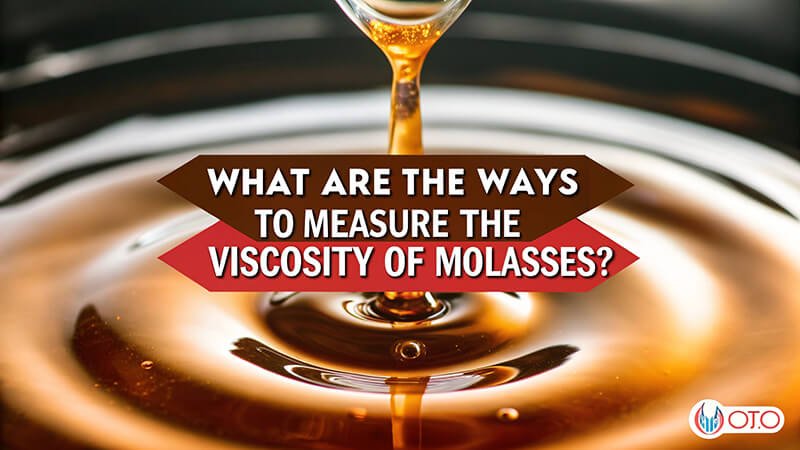Struggling with accurate molasses viscosity measurements? You're not alone. Many food industry professionals face this challenge daily, but there are reliable solutions available.
The main methods for measuring molasses viscosity include rotating spindle viscometers, falling ball viscometers, and cup viscometers. Each method suits different scenarios, with rotating spindle viscometers being the most widely used for their accuracy and versatility.
In my years at Martests, I've helped numerous food industry clients select the right viscometer for molasses testing. Let me share what I've learned about each measurement method and how to choose the best one for your needs.
How Does a Rotating Spindle Viscometer Measure Molasses?
When it comes to measuring thick substances like molasses, rotating spindle viscometers often emerge as the top choice. But why do so many professionals prefer this method?
A rotating spindle viscometer measures molasses viscosity by rotating a spindle in the sample and measuring the torque required to maintain constant rotation. This method provides accurate readings for different molasses types and temperatures.

At Martests, we've optimized our rotating spindle viscometers specifically for molasses testing. Here's what makes this method particularly effective:
Key Advantages
- Temperature Control
- Built-in temperature sensors
- Water bath compatibility
- Accurate readings at different temperatures
- Measurement Flexibility
- Multiple spindle options
- Various speed settings
- Wide viscosity range coverage
- Operating Features
- Digital display
- Data recording capabilities
- Easy cleaning and maintenance
I recently helped a major sugar producer set up their quality control lab. They chose our rotating spindle viscometer because it offered:
- Consistent readings across batches
- Easy operation for staff
- Reliable temperature control
- Comprehensive data logging
What Role Do Falling Ball Viscometers Play in Molasses Testing?
Falling ball viscometers represent a different approach to viscosity measurement. But when is this method most appropriate for molasses testing?
Falling ball viscometers measure molasses viscosity by timing how long it takes a ball to fall through the sample. This method works best for clear molasses samples and provides good repeatability at controlled temperatures.
Through our experience with various testing methods, I've identified several key aspects of falling ball viscometry:
Method Characteristics
- Measurement Process
- Sample temperature stabilization
- Ball selection criteria
- Timing accuracy requirements
- Environmental Factors
- Temperature control importance
- Sample clarity requirements
- Vertical alignment needs
- Application Areas
- Quality control checks
- Research applications
- Production monitoring
The method's limitations include:
- Sample clarity requirements
- Temperature sensitivity
- Limited viscosity range
How Effective Are Cup Viscometers for Molasses Testing?
Cup viscometers offer a simpler approach to viscosity measurement. But can they provide reliable results for molasses?
Cup viscometers measure molasses viscosity by timing how long it takes a specific volume to flow through a standardized orifice. This method is best for quick comparative measurements and quality control checks.
Based on our testing experience, cup viscometers have specific characteristics that affect their use:
Application Considerations
- Testing Environment
- Temperature control methods
- Sample preparation needs
- Cleaning requirements
- Measurement Protocol
- Standard operating procedures
- Calibration requirements
- Result interpretation
- Quality Control
- Repeatability factors
- Accuracy limitations
- Documentation needs
While simpler than other methods, cup viscometers require careful attention to:
- Sample temperature
- Flow time measurement
- Cup cleanliness
- Environmental conditions
What Modern Technologies Are Emerging for Molasses Viscosity Testing?
The field of viscosity measurement continues to evolve. What new technologies are changing how we measure molasses viscosity?
Modern viscosity measurement technologies include automated systems with digital controls, wireless data transmission, and continuous monitoring capabilities. These advances improve accuracy and efficiency in molasses testing.

At Martests, we're constantly integrating new technologies into our viscometers. Here's what's making a difference:
Technological Advances
- Automation Features
- Automated sample handling
- Programmable test sequences
- Real-time data analysis
- Digital Integration
- Cloud data storage
- Remote monitoring
- Automated reporting
- Enhanced Accuracy
- Advanced temperature control
- Improved sensor technology
- Better calibration methods
These innovations help our customers by:
- Reducing operator error
- Improving test consistency
- Enabling better quality control
- Providing better data management
Conclusion
Choosing the right molasses viscosity measurement method depends on your specific needs, from quick quality checks to precise research data. Each method offers distinct advantages, and modern technology continues to improve testing accuracy and efficiency.


